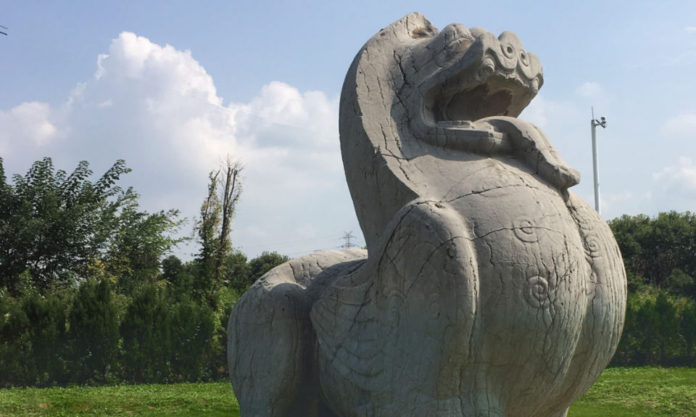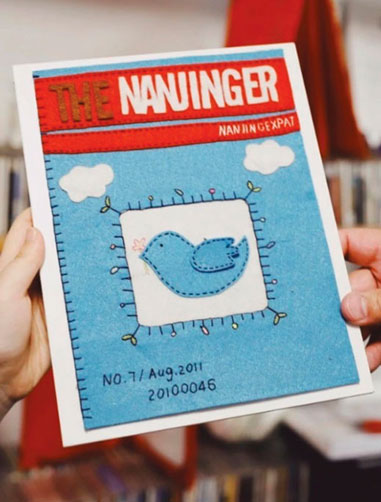It’s on your metro pass and perhaps your student card too. It greets you at both train stations and is the hallmark of the Nanjing cigarette brand. But what is that mystical four-legged creature and how did it come to be a familiar symbol of this city?
The bixie (辟邪) is a mythical creature with lion-like features, short wings and a dramatically curved figure. From its wide mouth extends an elongated tongue that rests on its unnaturally protruding chest. The beast, whose magical powers were believed to ward off evil, was commonly used in tomb sculptures of the Six Dynasties where it guarded the graves of the ruling elite. Sometimes almost four metres in height, these monumental carved creatures are strikingly beautiful even today, one and a half millennia later.
Funnily enough however, the original statues, of which several remain standing in and around Nanjing, have on the whole escaped the usual tourist site makeover. They are often found in the most unassuming locations, tucked away beside an expressway or poking out awkwardly between neat rows of vegetables as if a burden to the farmer.
Alongside the statues there usually stands a stone plaque suspended on top of a tall column with an inscription detailing the tomb occupant. Bizarrely, many of the inscriptions are carved in reversed writing or mirror image, a peculiarity that has provoked all sorts of theories, but at the very least reflects a deep fascination at the time with the imaginary, supernatural and unconventional.
So how did the bixie come to be a symbol of Nanjing in modern times? An illustration of the bixie from Xiao Jing’s tomb was one among a series of designs put forth by professor Bao Bin in the 1980s, when he was tasked with creating an emblem for the city that would be used for propaganda materials. He chose the bixie to reflect Nanjing’s recurring role as ancient capital, beginning in the Six Dynasties. The judging committee favoured the mythical beast over other symbols such as the city walls and were particularly fond of its supposed evil-dispelling powers. The more the image cropped up around the city, the more it became identified with Nanjing.
It does seem slightly odd however, that something ultimately associated with funerary culture should be the icon of a modern city. If the bixie protected the dead, then what kind of parallel does that draw when you erect a statue of one at the gateway to the city?
But such a simplified comparison is perhaps to wholly misinterpret traditional Chinese attitudes towards burial and death. Funerary statues, whether as grand and innumerable as the First Emperor’s terracotta warriors, or simply a humble wooden figurine place in the grave, were considered to assume their role in the afterlife and serve the deceased. Death did not necessarily mark the end of life altogether, but the transition from one realm to another in which one’s spirit could achieve immortality.
Reconsidering the bixie from this perspective, it is not there to protect what is dead and gone, but is in fact a facilitator in the achievement of immortality. The survival of these majestic statues one dynasty after another is remarkable in itself, while their reinterpretation within a modern context is an apt metaphor for the future of Nanjing.











